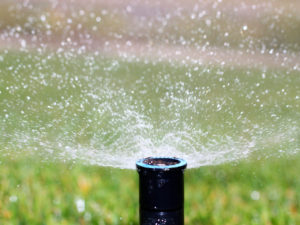
Seeing how much the irrigation industry is responsible for water waste, it is our duty to bring to the forefront simple step-by-step assessments that can make long-lasting impacts. Making sure different appliances throughout the home are not leaking are easy ways to save small amounts of water, but 59 percent of water is used outdoors through the sprinkler system. July is Smart Irrigation Month and the perfect opportunity to start talking about water conservation and what it means for our industry. For my company, Conserva Irrigation, it means going back to the basics and being a smart contractor.
What does that entail? As contractors, we know there are easy-to-follow steps that can be taken to ensure the irrigation system in use is working as efficiently as possible. Below are seven steps that we use at Conserva Irrigation to best identify when systems are wasteful and how to fix the issues – saving residents and business owners thousands of gallons of water a day in the process.
Step 1.
Audit: Assign values to a water budgeting tool to determine how much water should be used
Whether it’s a residential or commercial property, the first step for any irrigation contractor should be to use a proper water budgeting tool to identify how much water the system should be used in a normal year. At Conserva, we use a proprietary process to assess residential irrigation systems called the “System Efficiency Score” to rate the water efficiency of a system based on a numerical scale. For commercial irrigation systems, we perform a more robust version, called a Commercial Site Assessment (CSA). These signature assessment systems are based on studies published by the Irrigation Association and the Environmental Protection Agency.
Step 2.
Compare: How much water is actually being used and wasted
By comparing these two differentiating numbers, you can determine the extent of water waste caused by an inefficient system so we can focus on conserving water. Broken sprinkler heads and ground runoff can have a bigger impact on how much water is wasted than most people realize and result in disappointing outcomes when it comes to the appearance of lawns and landscapes.
Step 3.
Boots on the Ground: Discerning what is broken
There is no shortcut to having boots on the ground to go through a detailed assessment of each sprinkler head and main or lateral line to look for any leaks or broken components that could be causing the inefficiencies. Only by walking the entire system zone by zone and head by head will you be able to properly identify assets, and put together a strategic plan to tighten up the system and stop the bleeding.
Although tedious, this is one of the most important parts of the process, because without conducting a thorough assessment of the full system, true conservation of wasted water cannot happen.
Step 4.
Repair and Monitor: Apply strategy to fix broken components
After the water consumption level is established along with a strategy on how to increase efficiency, it’s time to make those critical repairs and adjustments, which should be prioritized in order of importance. The goal here is to create the most eco-friendly irrigation system possible — at each job, regardless of size.
Step 5.
Retrofit: Swap out all inefficient spray nozzles with high-efficiency spray nozzles
Once the critical repairs and adjustments are completed, you should continue exploring other opportunities to enhance the irrigation system’s performance and water use. These activities include optimizing head placement, adjusting sprinkler heads correctly, and ensuring uniform distribution of water throughout the landscape, especially around the slopes making a difference in the landscape.
You can easily swap out all the inefficient spray nozzles with high-efficiency spray nozzles. This will immediately reduce water usage by up to 35 percent – overnight – providing instant results and gratification.
Step 6.
Monitor: Yes, again
Once the retrofits have been made, its time to once again monitor the system’s water usage zone by zone to determine if efficiency has risen and water consumption has dropped. If neither of these things has happened, contractors should return to step 3 to once again look for breaks and inconsistencies in the system.
Step 7.
Install: Smart controller technology
Now, and only now, smart controller technology should be introduced into the system to help with conserving water.
Loading into it 40 years of weather data for the exact latitude and longitude of the home or business, smart controller technology utilizes this information and gauges how much water should be used for that location based on past weather conditions and patterns. The onsite weather sensor will also adjust and modify to exact weather factors at that time.
Nowadays, it is our duty to take a closer look at how we can be more conservative and smart in our approach. Sometimes, taking a step back and returning to the basics is the best thing we can do as contractors for conserving water on the landscape.
Written by Russ Jundt.
Russ Jundt is the founder of Conserva Irrigation, the only national outdoor irrigation company founded on the concept of water conservation. For more information, visit www.conservairrigation.com